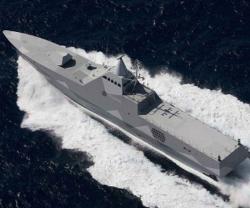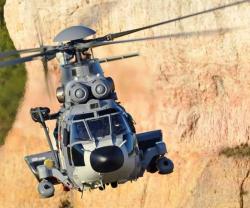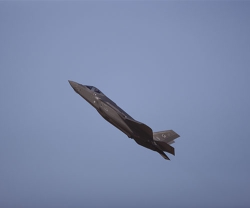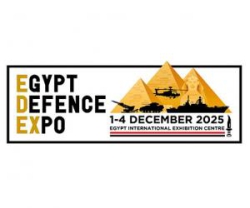Saab Sensis to Adapt NASA Traffic Management Tools
25.04.2012 North America
The National Aeronautics and Space Administration (NASA) has selected Saab Sensis Corporation, a subsidiary of defense and security company Saab, for the NASA Research Announcement (NRA) “Adaptation of a Surface Management Tool to Multiple, Capacity-Constrained Airports.”
Under the NRA, Saab Sensis will identify three current-day capacity-constrained airports and create realistic departure scheduling schemes for those airports to be tested within NASA’s Surface Operations Simulator and Scheduler (SOSS).
Through the research, Saab Sensis will broaden the scope of the NASA airport surface traffic optimization research beyond current trials to further determine their ability to enhance airport capacity through improved sequencing and scheduling.
One of the main objectives of the FAA’s NextGen initiative is to ease current and plan for mitigation of future capacity constraints at the nation’s airports. As part of the research into effective strategies for mitigating capacity issues, NASA is researching, developing and testing a number of decision support tools (DST) for future deployment in the National Airspace System (NAS) to assist air traffic controllers in addressing capacity issues.
As part of this NRA, Saab Sensis will identify three current-day capacity constrained airports by examining taxi-out delays, scheduled departure demand versus airport departure capacity and other characteristics. For the three airports, Saab Sensis will develop airport surface traffic scheduling approaches along with the ability to interject real-world operational constraints for testing within the SOSS tool.
“Addressing capacity issues through new Decision Support Tools that improve utilization of current runways and taxiways will positively impact air travel for the public through reduced delays and better on-time performance,” said Ken Kaminski, Vice President and General Manager of Saab Sensis.
“Saab Sensis will apply its surface traffic management modeling, simulation and DST development experience to accelerate the adaptation of these promising new tools for use in the NAS as a less costly capacity-reduction alternative to capital improvement projects like building more runways,” he added.
Under the NRA, Saab Sensis will identify three current-day capacity-constrained airports and create realistic departure scheduling schemes for those airports to be tested within NASA’s Surface Operations Simulator and Scheduler (SOSS).
Through the research, Saab Sensis will broaden the scope of the NASA airport surface traffic optimization research beyond current trials to further determine their ability to enhance airport capacity through improved sequencing and scheduling.
One of the main objectives of the FAA’s NextGen initiative is to ease current and plan for mitigation of future capacity constraints at the nation’s airports. As part of the research into effective strategies for mitigating capacity issues, NASA is researching, developing and testing a number of decision support tools (DST) for future deployment in the National Airspace System (NAS) to assist air traffic controllers in addressing capacity issues.
As part of this NRA, Saab Sensis will identify three current-day capacity constrained airports by examining taxi-out delays, scheduled departure demand versus airport departure capacity and other characteristics. For the three airports, Saab Sensis will develop airport surface traffic scheduling approaches along with the ability to interject real-world operational constraints for testing within the SOSS tool.
“Addressing capacity issues through new Decision Support Tools that improve utilization of current runways and taxiways will positively impact air travel for the public through reduced delays and better on-time performance,” said Ken Kaminski, Vice President and General Manager of Saab Sensis.
“Saab Sensis will apply its surface traffic management modeling, simulation and DST development experience to accelerate the adaptation of these promising new tools for use in the NAS as a less costly capacity-reduction alternative to capital improvement projects like building more runways,” he added.
Previous PostBAE Systems Wins Protective Hard Armor Inserts Order
Latest news
Latest events
Dubai International Air Chiefs’ Conference (DIACC 2025)
16 Nov 2025Atlantis, The Palm Dubai - United Arab EmiratesDubai Airshow
17 - 21 Nov 2025Dubai World Central (DWC) - United Arab EmiratesEgypt Defence Expo (EDEX)
01 - 04 Dec 2025Egypt International Exhibition Center New Cairo - EgyptDoha International Maritime Defence Exhibition & Conference (DIMDEX 2026)
19 - 22 Jan 2026Doha - Qatar






















